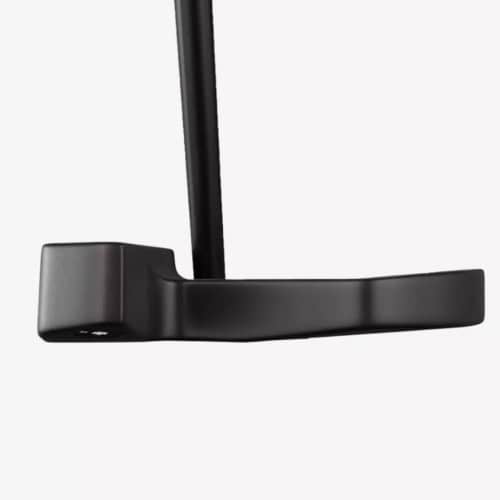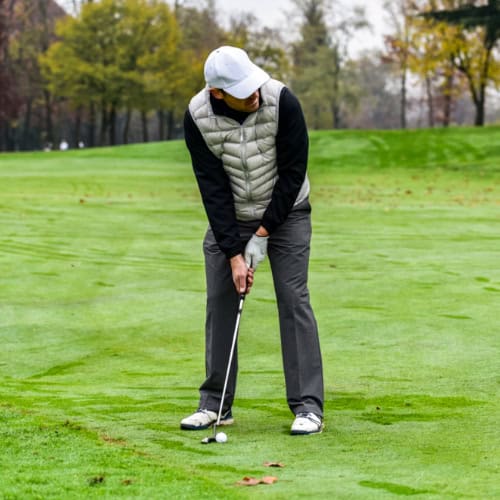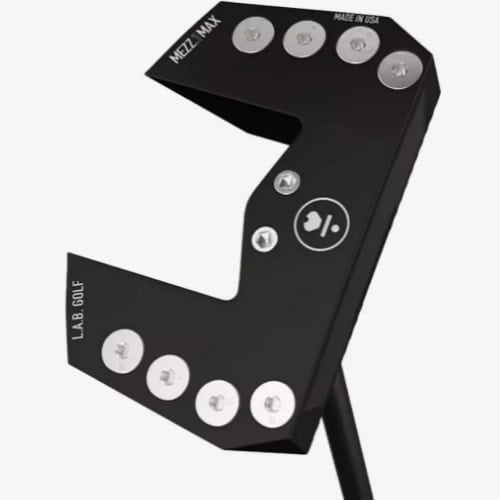Putting is hard. The stroke’s short, but the margin for error is razor-thin. One twitch of the hands and the face opens—missed putt, missed chance, frustration.
Many club manufacturers claim zero torque putters are the solution. These tech-forward clubs promise to keep the face square during the stroke, cutting down on rotation and helping you hit your line. Some say they’re the future. Others stick with their trusty blade.
This article breaks it all down: how zero torque and traditional putters compare in performance, feel, design, and value. By the end, you’ll know whether it’s worth making the switch or sticking with what’s in your bag.
- 1) What Is a Zero Torque Putter?
- 2) How Regular Putters Work
- 3) Performance Comparison
- 4) Feel and Feedback Differences
- 5) Ease of Use and Learning Curve
- 6) Professional and Amateur Opinions
- 7) Technology and Design Differences
- 8) Price and Value Consideration
-
9)
Frequently Asked Questions
- 9.1) What type of golfer should avoid zero-torque putters?
- 9.2) Can I use a zero torque putter if I have an arced stroke?
- 9.3) Are zero-torque putters allowed in USGA tournaments?
- 9.4) Will switching to a zero torque putter improve my short putts?
- 9.5) Do zero-torque putters require a different grip or stance?
- 9.6) Are there zero-torque blade-style putters available?
- 9.7) How do I know if my current putting issues are torque-related?
- 10) Final Thoughts
What Is a Zero Torque Putter?
Torque is the enemy of square. It’s the twisting force that pulls your putter face off-line during the stroke. Traditional putters, especially those with toe hang, tend to rotate open on the way back and closed on the way through. That movement means you have to time the release perfectly to square the face. If you miss the timing, you miss the putt.

Torque sneaks in even when your hands are steady. It comes from the club’s weight distribution, not just your stroke mechanics.
How Zero Torque Putters Eliminate Face Rotation
Zero torque putters are designed so the shaft runs through the center of gravity. That clever engineering keeps the face naturally square to the path. There’s no twisting, no forced manipulation.
With this setup, the putter head doesn’t want to open or close. It wants to stay neutral. That’s the magic trick: it takes less from you to make the putt go where you aimed.
Key Design Goals and Technological Principles
Most zero torque putters lean on three things:
- Lie Angle Balance (LAB) – The head balances itself when set at the correct lie, keeping the face aligned without effort.
- High MOI Design – Perimeter weighting or wide-body mallets help resist twist from mishits.
- Shaft-CG Alignment – The shaft pierces the head in a way that cuts torque to near zero.
It sounds technical, and it is. But the result is simple: a putter that wants to stay square.
Some models even look wild—like they came from a spaceship—because it’s hard to balance everything perfectly with classic shapes. But then again, how much do looks matter if you’re rolling in everything inside 10 feet?
How Regular Putters Work
Regular putters have been around forever. You’ve probably used one. Maybe you still do. But understanding how they behave—and why—can help you see what you might be missing.
Traditional Design Concepts (Toe-Hang, Face-Balance)

Most standard putters fall into two camps: toe-hang or face-balanced. Toe-hang putters let the toe drop when balanced, favoring arcing strokes. Face-balanced putters keep the face pointing up and suit straight-back, straight-through strokes.
This matters because each design shifts the club’s center of gravity, which creates rotation (torque) during the stroke. Whether subtle or dramatic, it means you’re consistently working to square the face at impact.
Role of Torque in a Conventional Stroke
Torque in traditional putters isn’t just present, but expected. The design assumes you’ll rotate the face open and then close it. It’s great when it works, but disastrous when it doesn’t.
Players often “time” the stroke with their hands. That’s risky under pressure. Miss by a hair, and the ball lips out.
Also, torque doesn’t forgive bad habits; it punishes them. With mishits, the face twists, pulls, pushes, etc. Suddenly, it’s not just your read that’s off; it’s the gear in your hands.
Performance Comparison
Let’s face it—putting is where strokes go to die. You miss short, burn edges and suddenly the front nine’s a rescue mission. So when a club claims to offer more accuracy, better forgiveness and stroke consistency, it must be investigated.
Accuracy and Start-Line Control

Zero torque putters are built to hold the face square. Less face twist equals better start lines. If you’re the golfer who misses three-footers just left or just right, this could be your fix.
Traditional putters rely on your hands squaring the face. That’s fine, until your hands betray you. Zero torque models take that timing guesswork out. The face stays square longer. You don’t have to manipulate it.
But not everyone benefits. If you already have tight face control, you may not gain much.
Forgiveness on Off-Center Strikes
With traditional putters, catch the toe or heel, and the ball skates offline. Some torque-balanced models handle this better, especially mallets with high MOI.
Modern zero torque designs blend torque balance with perimeter weighting. That combo keeps the face stable even on bad contact. Even if you miss the center, you roll it close.
Still, some older torque-free designs sacrifice forgiveness for balance. They’re better at staying square, but not always at saving mishits. So it depends on the build.
Stroke Consistency and Repeatability
The more repeatable your stroke feels, the more putts you make. That’s where zero torque really shines. The putter moves like it’s on rails. You don’t steer it; you swing it.
Traditional putters require more muscle memory and feel. That’s fine for players with thousands of reps under their belt. But if you want a stroke that repeats with less effort, the torque-free option gives you that path.
Ironically, sometimes, too much consistency feels robotic, and not everyone wants that. Some prefer artistry to autopilot.
Feel and Feedback Differences

Feel is personal. What clicks for one golfer feels dead in another’s hands. That’s why how a putter reacts through the stroke (and how it talks back at impact) matters just as much as any tech spec.
Stability During Stroke
Right off the bat, zero torque putters feel different. The head doesn’t drift. It tracks like it’s on a rail. That built-in stability gives you the sensation that the club is doing most of the work.
With a regular putter, the feel is more dynamic. You sense the arc, the toe swing and the need to guide the face. Some players love that. Others fight it.
If your hands tend to get too active, the locked-in feel of a zero-torque head might settle you down. But if you’re used to releasing the head, you might feel like you’ve been strapped to a straightjacket.
Impact Feel and Auditory Feedback
Not all zero-torque putters feel the same. A milled face gives a soft, muted thud. Insert models can feel clicky or springy. Some sound high-pitched. Others barely make a whisper.
Traditional putters come in every flavor, too: Soft blades, firm mallets and everything between. But players say torque-balanced heads can feel more “dead” or “muted” off the face, especially on off-center strikes.
If you rely on feel for feedback, this might bug you. If you want a consistent strike and don’t mind sacrificing a little auditory drama, it might be just right.
Common Adaptation Challenges
Players often miss short at first with zero torque models because the stroke feels easier; they don’t give it enough juice. And if they’re used to releasing the head, they may push putts when the face doesn’t follow their hands.
The adjustment curve varies. Some click instantly. Others need a few rounds(and a few three-putts) before things settle.
So, if you’re switching before a club championship, maybe hold off. But if you’ve got time to test and get used, this could be the smoothest ride you never saw coming.
Ease of Use and Learning Curve

You can buy a better putter. But can you use it? That’s where ease of use comes in. For some, switching to a zero torque putter is like learning a new language mid-round.
Who Benefits Most from Zero Torque Putters?
If you miss short putts left or right, fight the yips or feel like you’re steering the clubface every stroke, this design was made for you. The less you tinker with the face, the better your results.
It’s also a strong fit for golfers with a straight-back, straight-through stroke. You won’t need to “release” the head through impact. The club handles that on its own.
On the flip side, players with strong arcs or active hands might struggle. If you like to feel the toe rotate or depend on hand release to square the face, you could butt heads with this tech.
Adapting to a Different Stroke Mechanic
The biggest shock is that you don’t steer the putter anymore. That’s weird at first.
Instead of guiding the face closed, you’re letting it flow. That can feel (too) passive for those used to aggressive strokes. Some early misses feel like the ball didn’t get the message.
But the more you trust the putter, the better it performs. You stop manipulating and overthinking. You start rolling more putts on line.
It’s not muscle memory. It’s unlearning muscle memory.
Fitting and Setup Considerations
These putters demand proper fit.
Lie angle matters a lot. If it’s wrong, the balance falls apart and the head doesn’t stay square. Length is crucial too. Get it dialed and the putter becomes an extension of your arms. Miss it, and you’ll never see what it’s capable of.
A fitting can fix that. It aligns the club to your posture, grip and stroke. You wouldn’t wear someone else’s shoes to run a marathon. Don’t do it with your putter either.
Professional and Amateur Opinions

Let’s see how zero torque putters stack up when the pressure’s real, the crowd’s quiet and the cup looks like a thimble.
Tour Usage Trends and Pro Case Studies
The pro scene is split. Some players jump in, others keep their distance. Guys like Lucas Glover and Adam Scott gave zero torque a shot. Scott even rolled with a LAB model during a slump. Justin Rose has tested them. So has Will Zalatoris.
That said, adoption at the highest level is slow. Pros have razor-sharp strokes already. Many rely on feel and tradition. They’ve grooved their putting motion around a specific toe flow. If they change the club, they change the stroke. That’s risky when your paycheck depends on it.
Still, the tide’s shifting. LAB Golf has quietly made its way onto the DP World Tour. Odyssey’s newer models mirror the tech without the bold aesthetics. When big brands follow suit, we will see more professional adoption of the tech.
Amateur Reviews and Testimonials
Average golfers often struggle with face angle at impact. That’s exactly what these putters are built to fix. Online forums are filled with stories from players who gained confidence fast, especially on short putts. One person claimed he had dropped five strokes in a month. Another said he no longer fears the dreaded three-footer.
But it’s not all roses. Some miss the traditional look. Others found distance control took time. A few gave up after a week. It’s clear: this putter works best when you give it a real shot and get fit properly.
Key Takeaways from Side-by-Side Testing
Players with shaky strokes usually see a bump in make percentage, especially inside 10 feet. Those who already putt well notice less change. The biggest gains show up in consistency, not magic.
Still, once a golfer adjusts, many don’t want to go back. It’s not the club. It’s the trust.
Technology and Design Differences

Behind every zero torque putter is a series of engineering choices. Some subtle. Some bold. All designed to solve a single problem: rotation.
Lie Angle Balance vs Traditional Shafting
Lie angle balance means the putter is built so the face stays square at your address lie. You hold it properly, and it behaves properly. That’s not true with traditional putters, where the head wants to swing open or closed unless you control it.
With standard shafting, the balance point is often heel-biased. That creates toe hang. You can work with it, but it takes timing. Lie angle balanced putters remove that need.
However, lie angle balance only works if the putter fits you. One wrong degree and the magic breaks.
Center of Gravity Alignment
Traditional putters put the shaft near the heel. That’s convenient, looks good and easy to aim, but it shifts the center of gravity.
Zero torque designs shove the CG directly under the shaft axis. That cancels out torque. The face doesn’t twist because gravity has no angle to pull it.
This is easier said than done. Some brands, like LAB or Axis1, go to extremes to place the CG just right. Sometimes that means weird shapes, awkward hosels or forward weighting that looks like an engineering experiment.
And yet, it works.
Head Shapes, Shaft Positions and Offset Visuals
Many zero torque putters have unorthodox shapes. Think wings, pods, deep backs, or face-on hosels. These elements aren’t cosmetic. They move weight where it needs to be to keep the head balanced.
Traditionalists may cringe, but manufacturers are adapting. PXG, Bettinardi, Evnroll, etc. have all added cleaner lines and more familiar top lines to torque-free putters.
Offset matters too. Many golfers like a little forward press built in. Some zero-torque designs have none. Others hide it inside the hosel shape. It’s a visual feel thing: too much, and it looks awkward. Too little, and you may lose your setup rhythm.
Price and Value Consideration

Zero torque putters don’t come cheap. Most start around $300 and climb toward $600+, depending on the brand and build. LAB Golf’s Mezz.1 and DF3 sit firmly in the high-end category. PXG’s ZT models offer a slightly lower entry point, but still north of a mid-range blade.
Compare that to traditional options. You’ll find solid milled putters from Odyssey, Ping and TaylorMade in the $200–$300 range.
Durability and Material Build Quality
Zero torque putters are typically CNC-milled from aerospace-grade aluminum or stainless steel. They feature high-MOI multi-material construction, non-traditional hosel setups, and custom-fit options built to your exact specs.
You’re not just buying a putter, but a one-off piece of precision engineering.
Many traditional putters are cast or built for mass production. That’s not bad, but it’s not custom, either.
ROI vs Conventional Putter Performance
If you struggle with face angle control, zero torque putters can shave strokes. If your miss is always offline, even with good speed, a torque-free design may fix that faster than any lesson.
However, if you already putt well, you might not see dramatic improvement. And if you don’t get fit properly, or give it enough time to adapt, the price-to-performance ratio may disappoint.
The bottom line is that the real ROI comes when the tech solves a problem. And when it does… suddenly $500 feels cheap.
Frequently Asked Questions
Here are some frequent questions golfers ask about zero-torque and traditional putters. We provided answers to help you decide if it’s time for you to jump on the zero-torque wave.
What type of golfer should avoid zero-torque putters?
If your putting relies heavily on feel, rhythm and a natural arc with toe flow, you might not vibe with a zero torque head. Golfers who actively release the putter face or depend on wrist motion through impact may find these designs restrictive.
Can I use a zero torque putter if I have an arced stroke?
Yes, but it depends. If your arc is shallow and you don’t rely on significant face rotation, you can adapt. But deep arcing strokes tend to clash with the neutral balance of torque-free designs. It may feel like the head is fighting your swing.
Are zero-torque putters allowed in USGA tournaments?
Absolutely. They meet USGA and R&A standards, assuming the model doesn’t violate length, alignment or anchoring rules. Top brands like L.A.B. and PXG ensure their putters are tournament legal right out of the box.
Will switching to a zero torque putter improve my short putts?
It can—especially if your misses come from poor face control. The design helps you hold a square face through impact, which is critical inside 10 feet. But it won’t fix bad reads, nerves or pace problems.
Do zero-torque putters require a different grip or stance?
Not necessarily. But many players find that adopting a more relaxed grip and a pendulum-style stroke helps maximize the benefits. You’ll likely need to trust the putter more and your hands less.
Are there zero-torque blade-style putters available?
Yes. Brands like Bettinardi and Evnroll offer torque-free or torque-neutral blades with center-shafted or modified hosels. They don’t all look like spaceships, though some do lean futuristic to hit the balance points right.
If your putts consistently start left or right of target, despite solid contact, you may be struggling with face rotation. Try a putting mirror or a launch monitor to check your face angle at impact. The more variance, the more likely torque is the culprit.
Final Thoughts
Some golfers want a putter that feels like an extension of their hands. Others want something that fights for them: keeps the face square, holds the line and doesn’t flinch under pressure. Zero torque putters fall in the second camp.
They simplify, stabilize and remove one big variable: torque, and ask less of your hands. For players struggling with consistency, it’s a cheat code. For traditionalists with smooth strokes and muscle memory, maybe not so much.
Yet, you won’t know until you try one, not in a store or with a plastic mat and three balls, but out on the green, under pressure… When you care about the outcome.
Because when you stand over a six-footer for birdie, the only question that matters is: do you trust the putter in your hands?





